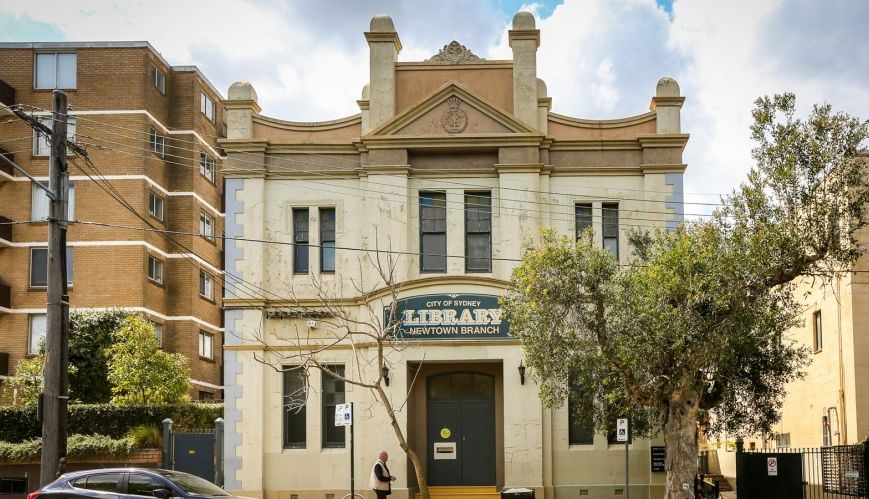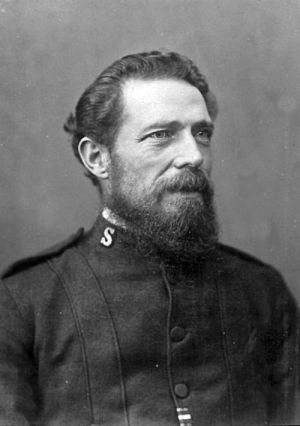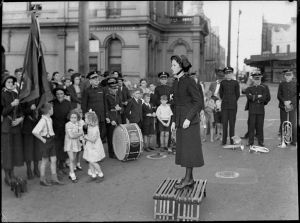Army foundations built on Newtown site

Army foundations built on Newtown site
The rebuilt Newtown Citadel (with The Salvation Army crest still visible in the triangular gable at the top) is now the home of the Newtown Branch of the City of Sydney Library. Photo courtesy of John Smith.
The inner-Sydney suburb of Newtown, which will celebrate its 160th anniversary this year, is an area of historical significance for The Salvation Army.
A piece of land in the suburb was the site of the first purpose-built Salvation Army building, constructed by pioneer Salvationist Edward Saunders.
Newtown has its origins in the early distribution of land by Governor Phillip to the Superintendent of Convicts, Nicholas Devine, in 1794 and 1799. It takes its name from a store owned by John and Eliza Webster in 1832, which carried a signboard that read New Town Stores. Although the area was unofficially known by that name, it was later officially declared Newtown when it became a municipality on 12 December 1862.
In the early years, Newtown was often referred to as Sydney’s ‘Romantic Town’ where wealthy residents built substantial homes that overlooked the city. Often seen as similar to a London village, it was noted for its clean air and genteel lifestyle.
By the time The Salvation Army arrived in Sydney, Newtown had become an overpopulated working-class suburb, and the brickworks in neighbouring St Peters had polluted the clean air. Rows of terrace homes had replaced many grand houses, and the suburb had deteriorated into a slum area.
It was the type of area in which the Army thrived, and on 1 April 1883, one of Sydney’s first corps was established among its blue-collar residents in Newtown. Like most Salvation Army corps of the time, it received a nickname and became known as the Newtown Nuggets.
 Edward Saunders oversaw the construction of the original citadel in Newtown.
Edward Saunders oversaw the construction of the original citadel in Newtown.
First barracks
The arrival of pioneer Edward Saunders as officer-in-command, who along with John Gore had commenced The Salvation Army in Australia, enabled the organisation to construct its first purpose-built Army barracks in Sydney.
Edward, a qualified stonemason, was responsible for many of the early Salvation Army buildings, including Newtown, Junee, and Wagga Wagga and the 1900 Officers Training Garrison in Melbourne, the facade of which still stands today in Victoria Parade, East Melbourne.
Drawing on his building background, Edward set about constructing the much-needed hall in Newtown. It was officially declared open on 15 March 1884 by the pioneer of The Salvation Army in Sydney, Major Thomas Sutherland.
The Sydney Morning Herald, on 20 March 1884, reported that Major Sutherland “said that the building was dedicated in the name of the Father, Son and Holy Ghost, and of General William Booth, of The Salvation Army, for the salvation of souls and the glory of God. Every brick that had been laid and every nail that had been driven were consecrated to God’s services. The work accomplished by the Army was that which none of the sects had even attempted.”
 A line drawing of the original Newtown Corps building.
A line drawing of the original Newtown Corps building.
Although the Sydney press had been openly hostile to the commencement of The Salvation Army in Sydney, it was obvious that its attitude had changed significantly over the intervening period. The Sydney Morning Herald, in the same 20 March 1884 edition, further reported on the “commodious barracks for the Newtown contingent of The Salvation Army”.
The article gave a detailed account of the building and its opening meeting. It reported that “Mr N Melville, MLA, on taking the chair, was warmly applauded. He referred to the early days of the Army in Newtown. The few have multiplied and had become a thousand. The Army had accomplished what other organisations had failed to do; they had taken the Scriptures to the fallen and had been the means of raising them up.”
New building
In June 1922, a substantially rebuilt building in Brown St [just off the main thoroughfare of King St] was opened by the Territorial Commander, Commissioner Hugh Whatmore. Boasting a gallery, wide aisles and a large platform, the building could hold 700 people and was filled three times during the opening weekend.
In early 1924, the new building sustained significant damage when the adjoining premises, the four-story emporium of Marcus Clark and Co, was destroyed by fire.
The Sydney Morning Herald of 15 January 1924 reported the damage to the Newtown citadel. “Next to Marcus Clark’s, and separated from it only by a four-foot right-of-way, is the Brown Street Salvation Army citadel, consisting of three halls – primary, senior, and junior halls. The main hall alone cost something like £3000 to build. All are badly damaged. With the collapse of Marcus Clark’s wall, the roof of the citadel gave way.”
The hero of the day was Commandant Mathers, who was conducting a Monday evening meeting when the fire broke out. Quickly moving his congregation of around 60 people from the building after a quick prayer and benediction, he dispatched one of the women to notify the fire brigade. Some 60 young people involved in youth activities in the YP hall were also quickly moved out.
 An open-air being conducted by members of Newtown Corps in 1942.
An open-air being conducted by members of Newtown Corps in 1942.
Once all were safe, the commandant returned to the building with a group of soldiers to rescue the piano, organ and most of the band’s instruments. Although a small fire did break out under the platform, this was quickly extinguished by firemen. The main damage to the complex resulted from falling masonry from the emporium next door.
Although the Newtown Corps flourished for many years with strong sections, during the latter half of the 20th century the demographics of the suburb changed, and numbers declined significantly, resulting in its closure.
The building was eventually sold and today houses the Newtown Branch of the City of Sydney Library. Its typical Salvation Army facade is still visible in Brown St, and the structure remains basically unchanged from the days when it was the home of one of Sydney’s first corps.